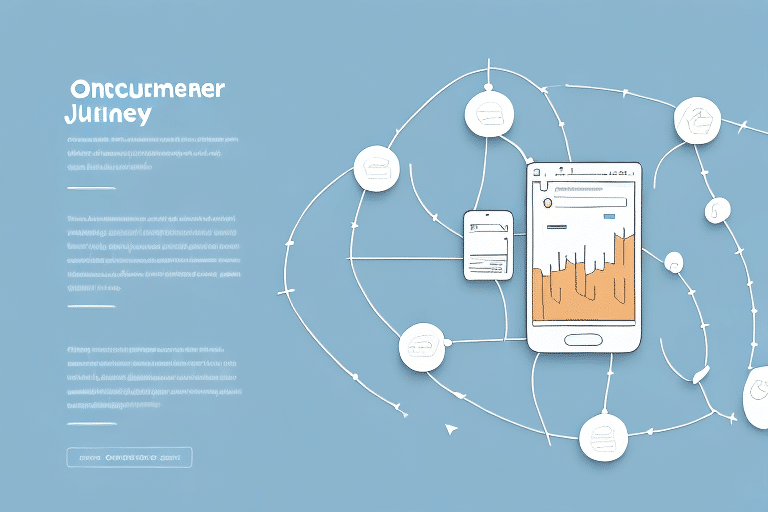Importance of Customer Retention in E-commerce
In the highly competitive online marketplace, customer retention is a critical factor for sustaining long-term business success. Retaining existing customers not only enhances customer lifetime value but also fosters loyalty, leading to referrals and organic growth. According to a Bain & Company study, increasing customer retention rates by just 5% can lead to a profit increase of 25% to 95%. This underscores the significant impact that effective retention strategies can have on a business's bottom line.
Benefits of Retaining Customers
- Increased Customer Lifetime Value
- Higher likelihood of repeat purchases
- Enhanced word-of-mouth referrals
- Reduced marketing and acquisition costs
Cost Savings Through Retention
Acquiring new customers is often more costly than retaining existing ones. Marketing and advertising expenses required to attract new customers can strain resources, whereas retaining customers leverages established relationships to maintain revenue streams. According to the Harvard Business Review, acquiring a new customer can cost five times more than retaining an existing one.
Understanding Customer Behavior and Preferences
Gaining a deep understanding of customer behavior is essential for crafting effective retention strategies. By analyzing customer interactions and transaction data, businesses can identify patterns and preferences that inform personalized marketing and product offerings.
Data Collection Methods
Customer Surveys
Surveys provide direct insights into customer satisfaction, preferences, and pain points. Tools like SurveyMonkey enable businesses to gather and analyze feedback efficiently.
Social Media Monitoring
Platforms such as Hootsuite allow businesses to track customer sentiments and engagement, providing real-time data on customer opinions and behaviors.
Leveraging Analytics Tools
Utilizing analytics tools like Google Analytics helps in understanding customer journeys, identifying drop-off points, and optimizing the user experience to better meet customer needs.
Reducing Customer Churn
Customer churn, the rate at which customers stop doing business with a company, poses a significant threat to business growth. Identifying and mitigating the factors that contribute to churn is vital for maintaining a stable customer base.
Common Reasons for Churn
- Poor customer service
- Subpar website experience
- High prices
- Limited payment options
- Poor product quality
Addressing Communication Issues
Effective communication is key to customer retention. Ensuring clear, consistent, and transparent communication through channels like email, social media, and customer support can significantly reduce churn rates.
Personalization to Prevent Churn
Personalized experiences make customers feel valued and understood. Tailoring marketing efforts and product recommendations based on individual preferences can enhance customer satisfaction and loyalty.
Personalizing the Customer Experience
Personalization is a cornerstone of modern customer retention strategies. By delivering customized experiences, businesses can strengthen relationships with their customers and encourage repeat business.
Utilizing Customer Data
Analyzing data from customer interactions, purchase history, and preferences enables businesses to create targeted marketing campaigns and personalized product recommendations. Tools like Salesforce Personalization can facilitate this process.
Seamless Multi-Channel Experience
Ensuring a consistent and personalized experience across all platforms—whether online, in-store, or via mobile—builds trust and reliability. This seamless integration encourages customers to engage with the brand through multiple channels.
Building Trust Through Transparency and Authenticity
Trust is a fundamental element in fostering customer loyalty. Transparent business practices and authentic communication cultivate trust, making customers more likely to remain loyal.
Transparent Business Practices
Being upfront about policies, pricing, and any potential issues, such as shipping delays, reassures customers and builds credibility. Clear return policies and honest communication about product availability contribute to a trustworthy image.
Providing Valuable Content
Offering informative and educational content positions a business as an authority in its industry. Regularly publishing blog posts, whitepapers, and how-to guides can engage customers and reinforce trust.
Enhancing Customer Service
Exceptional customer service is pivotal in retaining customers. Providing timely and effective support ensures that customers feel valued and understood.
Multiple Support Channels
Offering various channels for customer support, including phone, live chat, and email, ensures that customers can reach out in their preferred method. Implementing tools like Zendesk can streamline support operations.
Employee Training
Training staff to handle inquiries with empathy and professionalism enhances the overall customer experience. Empowering employees with the knowledge and tools to resolve issues efficiently can lead to higher customer satisfaction.
Implementing Loyalty Programs
Loyalty programs are effective in incentivizing repeat purchases and fostering long-term customer relationships. These programs reward customers for their continued patronage, encouraging ongoing engagement.
Types of Loyalty Programs
- Points-based systems
- Tiered rewards
- Cashback offers
- Exclusive member benefits
Benefits of Loyalty Programs
Well-designed loyalty programs not only increase repeat sales but also provide valuable data on customer preferences and behaviors, which can inform future marketing strategies.
Leveraging Customer Feedback and Reviews
Encouraging customers to leave feedback and reviews is essential for continuous improvement and building trust. Positive reviews enhance credibility, while constructive feedback highlights areas for enhancement.
Encouraging Feedback
Proactively requesting feedback through surveys, follow-up emails, and review platforms helps gather essential insights. Tools like Typeform can facilitate easy feedback collection.
Utilizing Reviews for Improvement
Analyzing customer reviews provides actionable insights into product performance and service quality. Addressing common concerns and implementing suggested improvements can enhance the overall customer experience.
Conclusion: Developing a Comprehensive Retention Strategy
Effective customer retention requires a multifaceted approach that encompasses understanding customer behavior, personalizing experiences, building trust, delivering exceptional service, implementing loyalty programs, and leveraging feedback. By focusing on these areas, e-commerce businesses can cultivate a loyal customer base, drive repeat sales, and achieve sustainable growth over time.
For further reading on customer retention strategies, consider exploring resources from Forbes Business Council and Shopify's comprehensive guides.






















